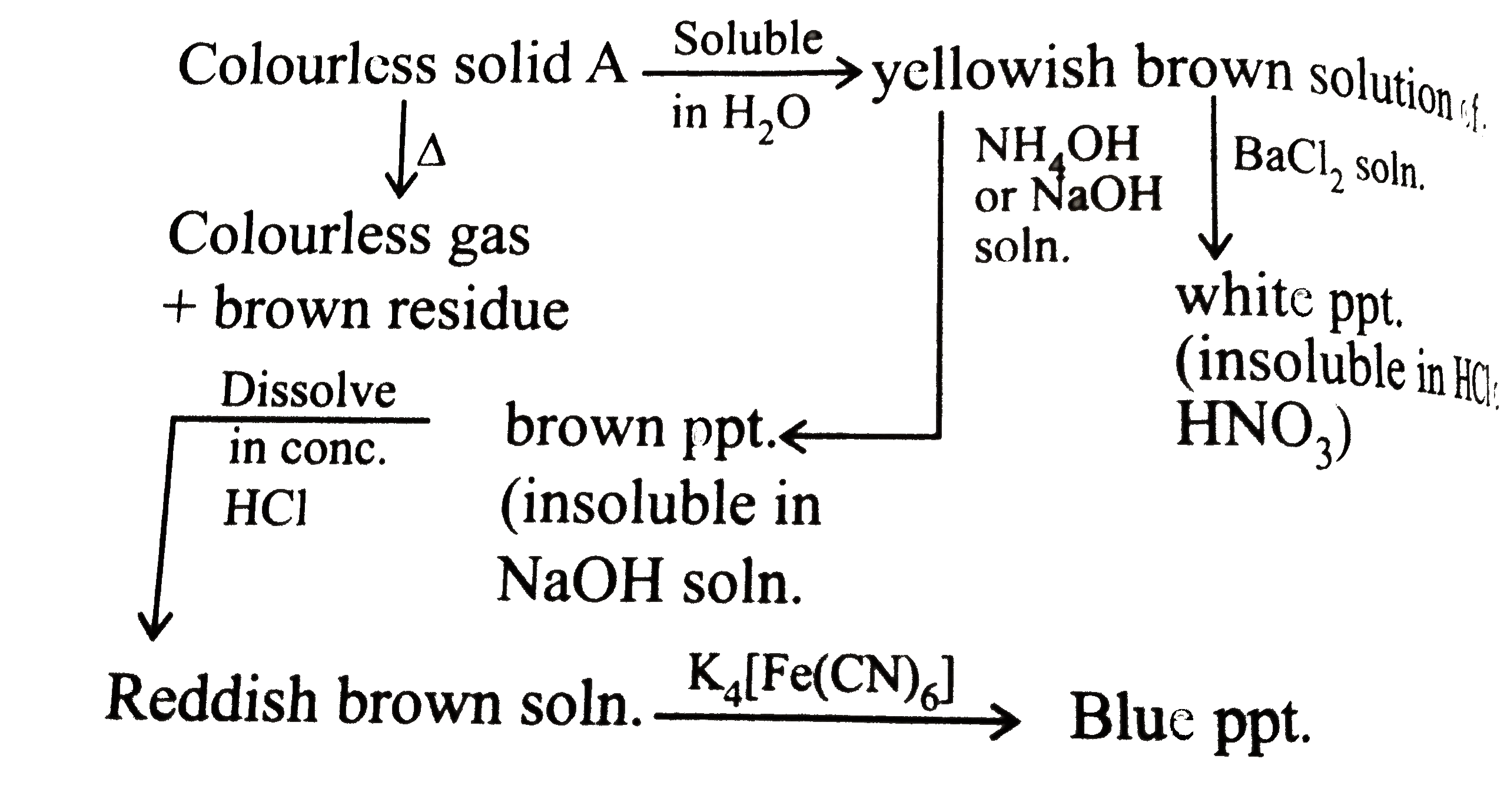Which of the following cations will form an insoluble red-brown compound with [Fe(CN)6]4− ?
Hg2+
Pb2+
Cu2+
Cd2+
The correct Answer is:C
To determine which cation forms an insoluble red-brown compound with (Fe(CN)6)4−, we can analyze the provided options step by step.
Step 1: Understand the Reactants
The reactants in this case are the cations and the complex ion (Fe(CN)6)4−. The complex ion is known to react with certain metal cations to form insoluble compounds.
Step 2: Identify the Cation
From the video transcript, it is mentioned that the cation Cu2+ (copper ion) reacts with (Fe(CN)6)4− to form a compound. We need to confirm if Cu2+ is the only cation that forms an insoluble compound with this complex ion.
Step 3: Write the Reaction
The reaction can be written as follows:
2Cu2+(aq)+(Fe(CN)6)4−(aq)→Cu2(Fe(CN)6)(s)
This indicates that two copper ions react with one hexacyanoferrate ion to form a solid compound.
Step 4: Determine the Nature of the Product
The product Cu2(Fe(CN)6) is described as a very insoluble reddish-brown hexa ferrite complex compound. This confirms that Cu2+ forms an insoluble compound with (Fe(CN)6)4−.
Step 5: Conclusion
Based on the information provided, the cation that forms an insoluble red-brown compound with (Fe(CN)6)4− is Cu2+.
Final Answer
The cation that will form an insoluble red-brown compound with (Fe(CN)6)4− is Cu2+.
---
The reactants in this case are the cations and the complex ion (Fe(CN)6)4−. The complex ion is known to react with certain metal cations to form insoluble compounds.
From the video transcript, it is mentioned that the cation Cu2+ (copper ion) reacts with (Fe(CN)6)4− to form a compound. We need to confirm if Cu2+ is the only cation that forms an insoluble compound with this complex ion.
The reaction can be written as follows:
2Cu2+(aq)+(Fe(CN)6)4−(aq)→Cu2(Fe(CN)6)(s)
This indicates that two copper ions react with one hexacyanoferrate ion to form a solid compound.
The product Cu2(Fe(CN)6) is described as a very insoluble reddish-brown hexa ferrite complex compound. This confirms that Cu2+ forms an insoluble compound with (Fe(CN)6)4−.
Based on the information provided, the cation that forms an insoluble red-brown compound with (Fe(CN)6)4− is Cu2+.
The cation that will form an insoluble red-brown compound with (Fe(CN)6)4− is Cu2+.
Topper's Solved these Questions
- QUALITATIVE INORGANIC ANALYSISBOOK - VK JAISWAL ENGLISHCHAPTER - QUALITATIVE INORGANIC ANALYSISEXERCISE - LEVEL 2
76 Videos
- QUALITATIVE INORGANIC ANALYSISBOOK - VK JAISWAL ENGLISHCHAPTER - QUALITATIVE INORGANIC ANALYSISEXERCISE - LEVEL 3
62 Videos
- PERIODIC PROPERTIESBOOK - VK JAISWAL ENGLISHCHAPTER - PERIODIC PROPERTIESEXERCISE - MATCH THE COLUMN
11 Videos
- s-BLOCK ELEMENTSBOOK - VK JAISWAL ENGLISHCHAPTER - s-BLOCK ELEMENTSEXERCISE - SUBJECTIVE PROBLEMS
2 Videos
Similar Questions
Knowledge Check
Which of the following will have same value of van't Hoff factor as that of K4[Fe(CN)6] ?
AAl2(SO4)3BAlCl3CAl(NO3)3DAl(OH)3
The complex ion [Fe(CN)6]4− contains:
View SolutionThe compound K4[Fe(CN)6] is called
View SolutionWhich of the following options are correct for [Fe(CN)6]3− complex ?
View Solution
Which of the following complex is formed when A reacts with K4[Fe(CN)6]?
View SolutionIn the complex K2Fe[Fe(CN)6]
View SolutionWhich of the following is more stable ?
(1) K4[Fe(CN)6]orK3[Fe(CN)6]
(2) [Co(NH3)6]3+or[Co(en)2(NH3)2]3+
(3) [NiCl4]2−or[Ni(CN)4]2−
View SolutionWhich of the following is more stable ?
(1) K4[Fe(CN)6]orK3[Fe(CN)6]
(2) [Co(NH3)6]3+or[Co(en)2(NH3)2]3+
(3) [NiCl4]2−or[Ni(CN)4]2−
View Solution
